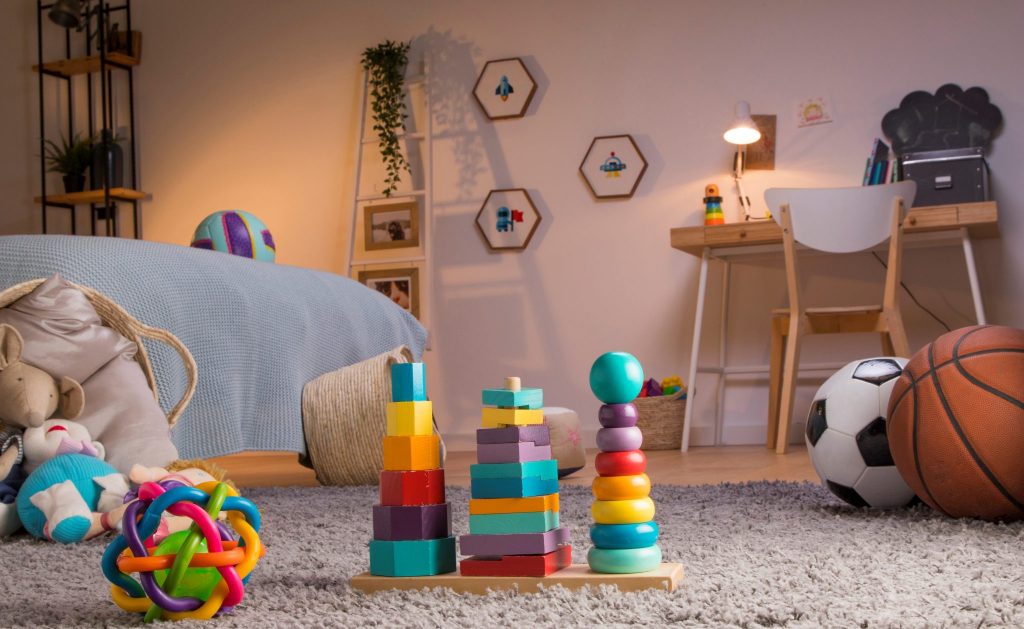
The children’s room should be safe, bright and versatile because the kids grow up quickly. And you can do it like that. Here are interesting solutions and useful tips.
Don’t spare the colors
Typically, the kids’ room is decorated in color: bright rugs, walls with drawings, curtains with large prints. But sometimes parents forget that colors affect the psyche of the child. Some shades soothe, while others, on the contrary, give the body a shake.
The rules are as follows:
-
- Give up heavy colors that inspire despondency and oppression. It’s about violet, purple, black, dark brown.
- If the child is inactive, choose yellow, orange and even red. The latter, however, don’t use a lot, just in the form of interior elements.
- If the baby can not calm down and fall asleep for a long time, light shades of green, blue, pink are ideal.
- Ask the child what color he likes, and be sure to consider this choice.
The kids’ room, if the area allows, is better to be zoned. In the sleeping part, calm, pastel colors are appropriate. And in the play area, there are bright shades that activate development. When the baby grows up, equip the training zone: yellow is good for mental activity.
Help draw
All children try themselves as an artist. And often not in albums, but on the walls — this is more interesting and convenient. That is why it is better to paint the walls of the room (not with oil, but with water-based paint), but do not wallpaper it: after the art period has passed, it will be easier to put the interior in order.
A good option is to highlight the whole wall (or part of it) specifically for the art. Nail a large slate board onto it, on which you can draw with chalk.
Do not save on light
Bright, sunny rooms are ideal for the kids’ room. But if there is no opportunity to equip a room with windows facing south, there is only one way out: choose the right curtains and add artificial lighting.
The room should have at least three light sources located at different levels: a large bright chandelier, a night lamp above the bed, additional lamps in the game and training areas. Ideal — floor lamps with adjustable brightness.
Choose “growing” furniture
The best furniture for the children’s room is universal, “growing” with the child. The main principle is the absence of sharp corners and easily breaking elements.
The bed can be sliding. For older children, a two-tier design is a good choice. It saves space (on the ground floor you can put a table or equip a play area) and is interesting for a child who likes to climb somewhere.
There shouldn’t be a lot of furniture in the room. Replace bulky toy racks with bags or small drawers that can be stacked on top of each other. Add to this a small wardrobe for things, a table with a chair for classes, several wall shelves for small items, souvenirs and treasures of the child and a large mirror. This kit will be enough.
If the place allows, you can equip the room with a mini-gym, hang a swing, and install a small slide. But all this must be done taking into account the fact that over time, when the baby grows up, these elements will become unnecessary and they will have to be removed.
Remember safety
All materials for the kids’ room should be environmentally friendly. For the floor, if possible, choose a coating that will make it warm and non-slip (cork, laminate). In the playing area, lay a short-pile rug and a base made of natural material.
Everything that the child uses, he must get it himself, without outside help.
Picture Credit: Freepik
